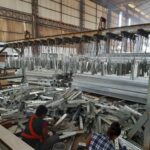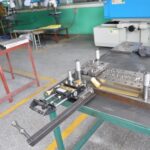Understanding Material Properties
In the case of injection molding, one of the most important factors that define success is the properties of the material being used. Choosing the right material can significantly affect the quality and durability. It is time to explore the exciting world of materials and find out how they compare to one another.
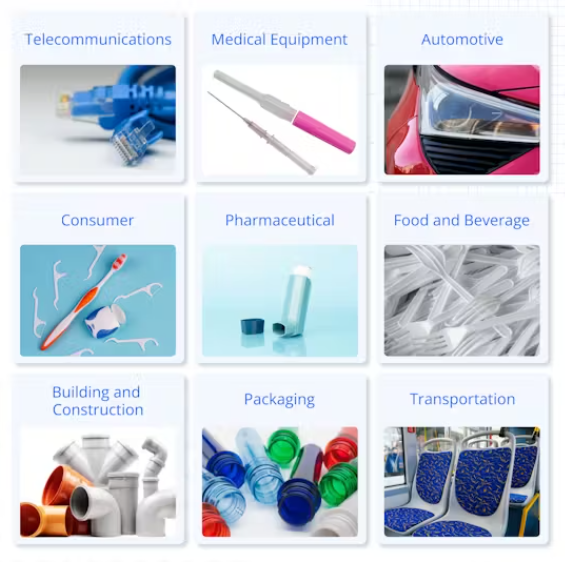
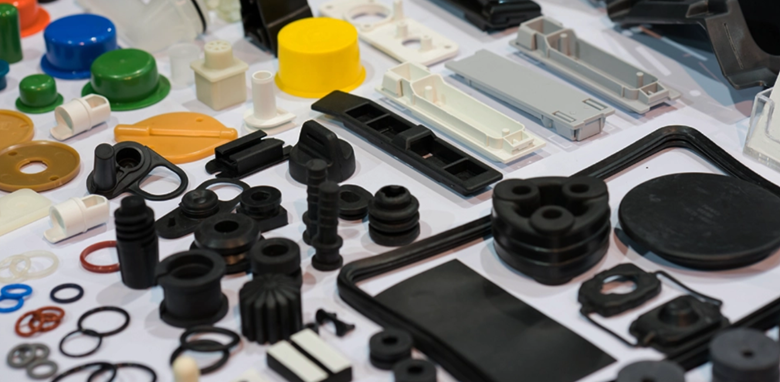
Engineering Plastics: An Introduction
Engineering plastics are those types of plastics that can be used in conditions that are high stress and harsh environments. They cost more expensive than commodity plastics, but perform better. Some of the most familiar types of thermoplastics are Polycarbonate (PC), Acrylonitrile Butadiene Styrene (ABS), and Polyamide (PA), or Nylon.
Polycarbonate (PC)
Polycarbonate is a top gun in the league of plastics. It has high impact strength, good clarity, and is heat resistant. This makes it suitable for use in products such as eyeglass lenses, auto parts, and electronic enclosures. For instance, a plastic products company might use PC for making durable, clear covers for LED lights.
Acrylonitrile Butadiene Styrene (ABS)
ABS is characterized by high levels of toughness as well as impact strength. It is widely applied in car accessories, toys (such as LEGO), and electronics. ABS is also preferred for since it has a good adhesive property with metals and other thermoplastics. The use of ABS in results in the production of tough and robust products.
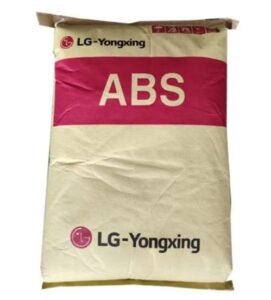
Polyamide (PA/Nylon)
Nylon is preferred for its high strength, good wear resistance and excellent resistance to chemical attack. It’s used in gears, bearings and other mechanical parts. like Nylon can withstand harsh chemical environments, making them suitable for automotive and industrial applications.
Nylon 6 has high toughness and easy to process, widely used in textile industry and automotive industry. Nylon 66 has higher tensile strength, heat resistance and therefore suitable for high stress applications.
Glass-filled Nylon variants offer increased stiffness, dimensional stability, and reduced shrinkage, making them valuable for high-performance gears and structural components.
Comparing Mechanical Properties
Tensile Strength
Tensile strength is the maximum stress a material can be subjected to in tension or being stretched. Polycarbonate has a tensile strength of about 70 Mpa which makes it suitable for structural applications. ABS has a tensile strength of about 40 MPa which is still quite strong but not as strong as PC. Nylon is in between with the tensile strength of 40-90 MPa depending on the grade and additives used.
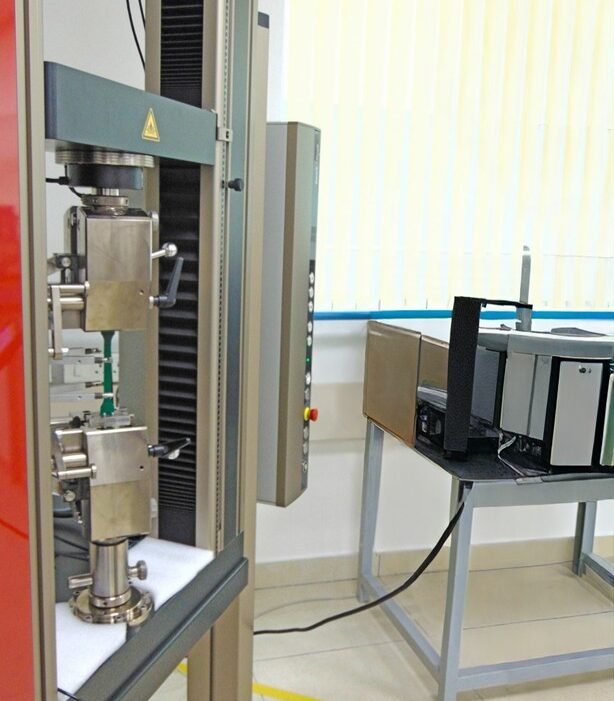
Impact Resistance
Impact resistance measures a material’s ability to absorb energy during deformation. Here polycarbonate stands out, as it demonstrates very good impact strength even at low temperatures. Impact strength is also good in ABS making it ideal for products that are likely to be dropped or hit. Nylon has good tensile strength, but its impact strength is moderate and it is used in applications where toughness is more important than flexibility.
Heat Resistance
This is important for parts that are subjected to heat since high temperatures may lead to damage of the product. Polycarbonate has a heat resistance of up to 140°C without deforming while ABS has a heat resistance of up to 100°C. Nylon can withstand up to 120°C but can be compounded to go higher with the right additives.
Real-World Examples
- Automotive Industry: In the automotive industry, choosing the right material is vital. A plastic products company might use PC for headlight covers due to its clarity and durability. ABS could be used for interior trim panels because of its toughness and ease of molding. Nylon is often chosen for under-the-hood components due to its chemical resistance and strength.
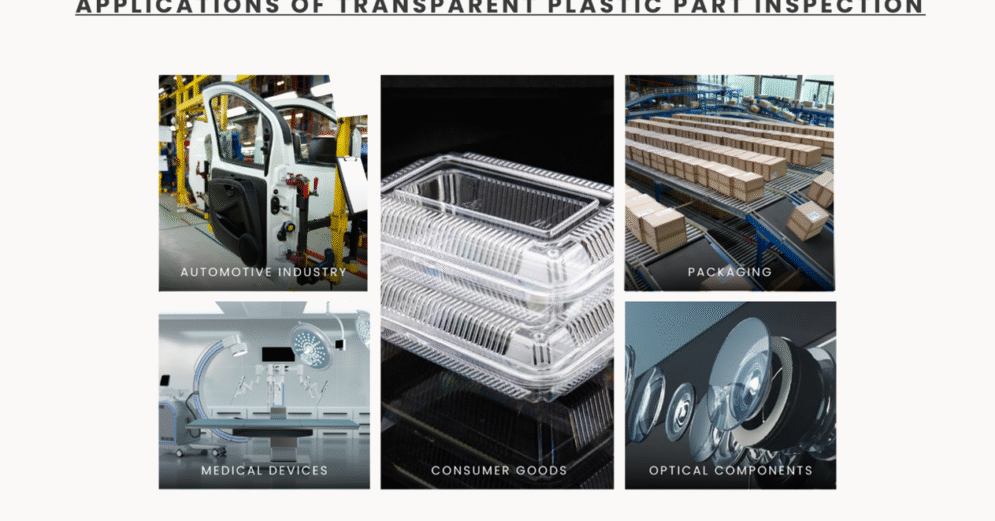
- Consumer Electronics: In consumer electronics, ABS is used for enclosures and structural parts. Due to its ability to be easily molded and possessing good mechanical characteristics, it is ideal for products such as remote controls and computer enclosures. Polycarbonate might be used for screens and covers due to its optical clarity and scratch resistance.
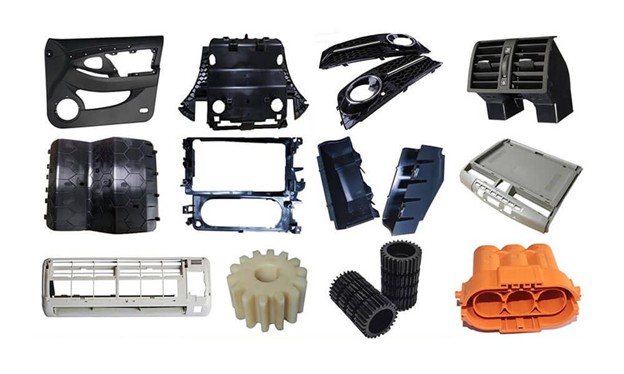
- Medical Devices: When it comes to medical applications, engineering plastics have to be of high quality. Medical applications of polycarbonate are common since it is a clear, high strength material. ABS might be used for housings and other durable parts. Nylon is chemically inert and thus can be used in applications where it is in contact with different fluids.
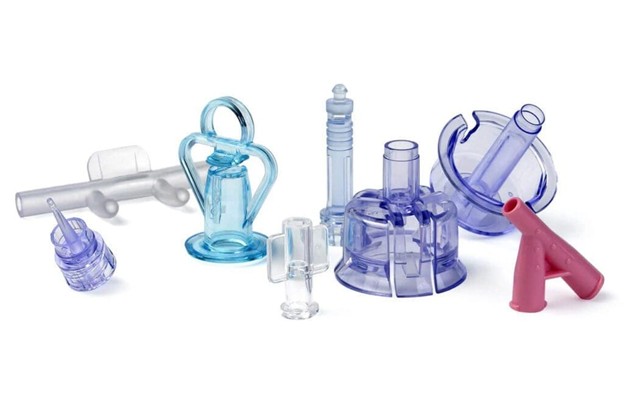
Top 5 Dos and Don’ts
Dos
- Do Conduct Material Testing: Always test materials for mechanical properties and chemical resistance to ensure they meet your needs.
- Do Consider Long-Term Costs: Factor in lifecycle costs, including maintenance and disposal, when choosing materials.
- Do Consult with Experts: Work with material suppliers to find the most cost-effective and suitable materials for your project.
- Do Optimize Injection Mold Design: Design molds to minimize waste and maximize efficiency.
- Do Stay Updated: Keep abreast of new materials and technologies that might offer better performance and cost savings.
Don’ts
- Don’t Compromise on Quality: Cutting costs at the expense of material quality can lead to product failures and higher long-term costs.
- Don’t Overlook Regulatory Compliance: Ensure all materials meet industry standards and regulatory requirements.
- Don’t Ignore Material Compatibility: Make sure materials are compatible with each other and with your production processes.
- Don’t Skip Prototype Testing: Always prototype and test parts to identify any material issues early.
- Don’t Forget About Sustainability: Consider the environmental impact of your material choices and aim for sustainable options where possible.
Cost vs. Performance Considerations
When choosing materials for injection mold design, balancing cost and performance is key. This is especially true for plastic manufacturing companies that want to produce high-quality plastic components while keeping expenses in check. Let’s explore how you can make informed decisions that satisfy both your budget and performance needs.
The Cost-Performance Equation
Selecting the right material involves evaluating both cost and performance. It’s not just about picking the cheapest option; it’s about finding materials that meet your specifications without breaking the bank. For example, polypropylene (PP) is widely used in various plastic components because it’s affordable and offers decent durability. However, in applications requiring higher strength, such as automotive parts, engineering plastics like polycarbonate (PC) may be a better choice despite being more expensive.
Performance Metrics Matter
In assessing the materials, one has to look at factors such as tensile strength, impact strength, and thermal conductivity. Nylon 6 and nylon 66 are preferred engineering plastics because of their excellent mechanical properties. Nylon 66 is more thermally stable than nylon 6 and, therefore, more suitable for high temperature applications. Also, glass reinforced models increase the strength and stiffness and offer even higher performance.
Testing Standards
For the material selection to meet required performance, you should consult testing standards such as tensile strength ASTM D638 and impact resistance ASTM D256. These standards assist in determining whether the selected materials shall meet the intended design standards. For example, in injection mold design, glass filled nylon can greatly enhance the strength of plastic components.
Measuring the Cost against Long-term returns
Of course, cost plays an important role, but it is also necessary to pay attention to long-term performance. Choosing low cost engineering plastics may lead to higher maintenance costs and shorter product lifespans. or instance, using a lower-cost plastic in a high-wear application could result in frequent replacements, ultimately increasing costs. However, by using the durable engineering plastics, one is able to save money in the long run since there is little need to replace the material frequently.
Here are a few real-world examples of cost versus performance trade-offs in materials selection:
Automotive Industry: Nylon vs. Metal
Scenario: In the automotive industry, manufacturers often choose between nylon and metal for engine components. Nylon offers reduced weight and resistance to corrosion but is more expensive.
Decision: Many manufacturers choose glass-filled nylon for components like intake manifolds. Although pricier, its weight savings improve fuel efficiency and performance.
Evaluation Process:
- Cost Analysis: Comparing material costs, including tooling and manufacturing.
- Performance Testing: Assessing durability, heat resistance, and impact strength.
- Outcome: Nylon’s overall benefits in performance and fuel economy justify the higher material cost.
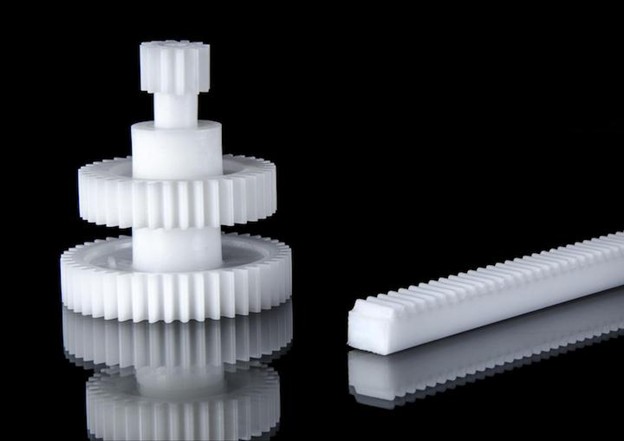
Packaging Industry: PET vs. HDPE
Scenario: In the packaging industry, companies consider Polyethylene Terephthalate (PET) versus High-Density Polyethylene (HDPE) for bottles.
Decision: PET is chosen for beverage bottles due to its clarity and strength, even though it’s more expensive.
Evaluation Process:
- Performance Testing: Assessing barrier properties, strength, and appearance.
- Cost-Benefit Analysis: PET’s recyclability and consumer appeal outweigh the higher costs.
- Outcome: PET provides a better consumer experience and longer shelf life.

Prototyping and Testing The importance of prototyping and testing before full-scale production
In the field of plastic injection molding, prototyping and testing phases are critical and can either make or break a project. Before diving into full-scale production, it’s crucial to validate your injection mold design and materials through rigorous testing. Let’s explore why this process is so vital and how it benefits your plastic products company.
Why Prototyping Matters
Prototyping enables one to develop a preliminary model of the product in order to discover problems that may be present. This is the stage that brings the injection mold design to life. Through prototypes, you can be able to identify the design problems early enough before they become expensive production issues.
For instance, a plastic manufacturer who is contracted to supply automotive plastic components may design and build mock parts to test their mechanical properties. This initial testing phase of prototyping is critical when it comes to performing well in high stress conditions.
Testing for Success
This is the process of exposing the prototypes to conditions that are likely to be experienced in the actual application in order to confirm their performance. Factors such as temperature, pressure, and chemical endurance are considered to evaluate against industry standards. Tensile strength tests described by ASTM D638 can help to understand how materials such as ABS or nylon will perform under load.
A plastic products company manufacturing medical devices for example may carry out biocompatibility tests to determine whether the products they are manufacturing are safe to be used in health facilities. This level of scrutiny ensures compliance with FDA regulations and boosts consumer confidence.
Real-World Example: Application of Insert Molding in Electronics
Consider a plastic manufacturing company creating electronic housings using insert molding. They might prototype these housings to test how well the metal inserts are encapsulated by the plastic. Through testing, they can assess factors like thermal conductivity and impact resistance, ensuring the final product performs reliably in consumer electronics.
Avoiding Costly Mistakes
Failure to prototype and test can be costly since it results in the production of faulty products. Think about the situation when you find out that there is something wrong with the injection mold design after you have started the large-scale production. Not only would this be time consuming and costly but it would also harm your reputation as a supplier in the eyes of the customer.
A plastic manufacturer that produces packaging parts of foods, for example, must consider the FDA food contact standards. Prototyping allows them to test different materials and designs, ensuring they select the best option for performance and safety.
Working with Plastic Manufacturing Companies: Tips for Successful Collaboration
- Building Strong Partnerships: Cooperating with plastic manufacturing companies is crucial in order to develop good quality plastic components. Selecting a partner is not just about picking a plastic factory; it is about creating a partnership that will be mutually beneficial for the projects you are working on. Below are some of the major guidelines that will assist you to work effectively with plastic companies.
- Understand Your Needs: Before going into collaboration, it is important to set out the specifications of your project. Do you need help with the injection mold design or for that matter do you need services in insert molding? Understanding your needs enables you to choose a right company in the production of plastic products. Think about the specific services in plastic injection molding that you need. Explain what kind of material should be used, for example engineering plastics, and what characteristics of the finished parts are required.
- Communication is Key: Effective communication with your plastic manufacturer is crucial. The communication should be frequent and transparent with regards to the project’s schedule, requirements, and possible issues that may arise. Organise status meetings and utilise project management applications to monitor the work being done. This assists in creating harmony between the two parties, so that the plastic manufacturing companies are well informed of your vision and goals.
- Emphasize Prototyping and Testing: Prototyping and testing are critical phases in any project. Consult to create the prototypes that will conform to engineering requirements and dimensions. Testing confirms that the plastic components are operating as they should and pass the acceptance tests.
- Evaluate Capabilities and Expertise: When selecting among plastic companies, consider their technical competency and experience. Ensure that your partners have worked in your industry of operation and that they understand the engineering requirements of your project. For instance, if your project involves complex injection mold design, select a company that specializes in advanced design techniques and has a track record of successful projects.
- Set Clear Expectations: It is useful to establish goals at the beginning of the project so that there will be no confusion later. Identify and set projects’ goals and objectives, time frames, and quality requirements. Set down the parameters of the acceptance of the final plastic components. Other aspects that should be described include the surface finish, dimensions and tolerances, and any other standards that may apply to your industry. Clear expectations pave the way for smooth project execution.
- Quality Control and Standards: Make sure that the you deal with have good quality control measures in place. Ensure that they conform to certain standard practices like the ISO 9001 for quality management system. Production audits and inspections that are conducted periodically assist in maintaining high quality and conformity to your requirements.
- Foster Innovation: Promote new ideas by working together on a new material or a new process. Talk with your partner about using sustainable materials or advanced techniques. New ideas help to cut costs and enhance the characteristics of the final product. Do not close your mind to the advice that your manufacturing partner may give you since they are more knowledgeable in this area.
- Address Challenges Together: There are always issues that crop up in every project, be it a change in design or a problem with the material to be used. It is therefore important to engage your plastic manufacturer and work out the ways of solving the problem. Such an approach enhances the relationship between the two entities and makes sure that each party is willing to address challenges. For instance, if there is a material used in the injection mold design that is no longer available, then talk of other materials that have similar properties.
- Continuous Improvement: After project completion, review the collaboration process. Identify areas for improvement and discuss them with your partner. Continuous improvement not only enhances future projects but also strengthens the relationship with your plastic manufacturing companies. Celebrate successes and learn from challenges to foster a long-term partnership.
Real-World Example: Otter Products and XYZ Plastics
Background: Otter Products collaborated with XYZ Plastics to manufacture their rugged smartphone cases under the OtterBox brand.
Collaborative Approach:
- Product Design: Otter Products provided detailed specifications for durability and waterproofing, while XYZ Plastics optimized injection mold designs for precise fit and ruggedness.
- Quality Standards: Prototypes underwent rigorous testing to meet military-grade durability and water resistance standards.
- Production Scale: XYZ Plastics invested in high-capacity injection molding machines to meet Otter Products’ global demand.
- Pricing: Negotiations focused on material costs and production efficiency to ensure competitive pricing.
- Continuous Improvement: Regular feedback loops and process enhancements ensured high-quality, efficient production.
Outcome: The collaboration led to the successful production of OtterBox Defender cases, known for durability and protection across global markets.
Key Takeaways:
- Strategic Partnership: Choosing the right manufacturing partner is crucial for product success.
- Quality Assurance: Rigorous testing maintains product reliability.
- Scalability: Investing in production capabilities supports market demand.
- Cost Efficiency: Negotiating competitive pricing enhances profitability.
- Innovation: Continuous improvement drives product excellence and market leadership.
In conclusion, selecting the right plastic components involves a careful balance of understanding material properties, considering cost versus performance, and prioritizing prototyping and testing. Successful collaboration with plastic manufacturing companies further enhances this process, ensuring alignment on quality standards, specifications, and mutual goals. By following these guidelines, businesses can confidently navigate the complexities of material selection, optimize production efficiency, and deliver high-quality plastic components that meet both functional requirements and budgetary constraints.



